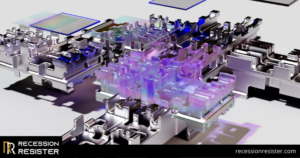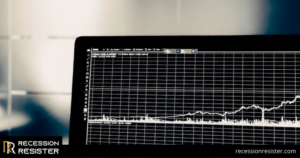ML is a branch of AI in the area of Computer Science, whereby computers can imitate how people learn with the help of stats and data. The Healthcare industry is one of the largest and most active industries on the planet, having an abundance of manual control at each step. The majority of patient care clinical documents are written by hand by professionals, whereas only certain reports are produced by automated methods.
This method increases the likelihood of a wrong diagnosis and thus puts a patient’s life in danger. Lately, deploying Machine Learning for automating tasks that used to be done manually has become much more common. The adoption of Deep Learning (DL) and Machine Learning (ML) approaches to create various wellness applications is hindered by various obstacles, yet there are plenty of advantages in terms of security that make up for it.
In the present day of high-tech advancements, Machine Learning and Deep Learning have brought about major changes in fields like politics, production and transportation. In the last few years, the employment of smart technologies has grown dramatically in several areas, including our day to day lives. The field of healthcare had not been touched by considerable technological progress in the past.
Healthcare all over the world has gone through an immense transformation due to the arrival of artificial intelligence. Nasr and colleagues analyze the current most advanced intelligent healthcare systems, pointing out prominent facets like fitness checking wearables and smartphones, using Machine Learning to anticipate sicknesses, and aid frameworks, containing social automatons built for assisted living surroundings.
Bharadwaj et al. looked into how integrating ML algorithms with Healthcare Internet of Things (H-IoT) technology can produce rewards, decision-making capability, and potential for future advancements. The usage of ML/DL methods has created noteworthy outcomes in multiple disciplines such as brain tumor segmentation, categorizing saliva samples of COPD patients, aiding Chronic Neurological Disorders, detecting anomalies in the Artificial Pancreas, clinical image adjunction, and recognizing cancerous cells, amongst other activities.
It is predicted that within the next few years, intelligent computer programs will be able to complete much of the work currently carried out by radiologists and physicists when reading medical documents. ML will transform conventional medical practice and research. ML/DL models have been used in the healthcare field significantly, allowing them to reach a level of performance that is akin to a human’s.
This has been especially handy in performing pathological tasks. Some research showed that the intelligent models did better than clinical professionals in certain areas. Esteva et al. demonstrate the capability of a single Convolutional Neural Network (CNN) compared to 21 board-certified dermatologists for categorizing biopsy-proven skin lesions of the most dangerous skin cancer.
The results present that Artificial Intelligence can identify skin cancer with the same degree of precision as dermatologists. Rajpurkar et al. have developed CheXNet, an algorithm that can diagnosis pneumonia in chest X-rays at a higher accuracy than even the most experienced radiologists, surpassing them on the F1 score. There has been remarkable progress in the development of computer-assisted investigative systems, due to the efforts to heighten the efficiency of ML models compared to humans.
The advancement of cutting-edge technologies like the Internet of Things (IoT), Big Data, cloud computing, etc. has heightened the power of artificial intelligence systems for healthcare applications. With the use of such technologies in conjunction, AI can produce intricate and precise monitoring and prognostication systems that can offer human-oriented emergency medical aid.
Shishvan and colleagues studied a range of new ML techniques in the setting of comprehensive healthcare delivery. This paper looks into making use of smart algorithms for tasks like data collecting, defining characteristics, model fitting, instruction, and implementation, as well as establishing a collection of performance measurement criteria to judge outcomes. Kumar and colleagues have devised a classification system for tracking the return of certain health issues based on patients’ medical records.
The method employs pre-trained word2vec, GloVe, domain-trained, universal sentence encoder embeddings, and fastText to assess the return of sixteen separate medical conditions from clinical histories.
As our comprehension of integrated and automated systems in professional medical contexts grows, healthcare offerings have extended to wearable gadgets, the Internet of Things, and cloud-based applications in this high-tech age. Intelligent systems need to be carefully cultivated in order to make possible the creation of specially tailored treatments, accurately pinpointing areas of sickness, and recognizing ailments.
Researchers and medical professionals are taking a close look at various ways to make use of the abilities of deep learning techniques for critically ill patients in ICUs. For example, Ganainy et al. recently proposed a real-time consultation system designed to estimate the current Mean Arterial Pressure (MAP) values with the help of novel machine learning frameworks, which can be used with unprecedented convenience right at the patient’s bedside.
Most smart programs that use customer information have experienced lackluster outcomes at some point in their functioning due to their fixation on measurements. Visualizing the challenges to privacy created by sending or analyzing data to create a prediction system leads to a stalemate.
Background of ML Algorithms

Many developing countries have devoted time and resources to developing sophisticated methods that are cost-efficient in the long term. Progress is often related to the evolution of automated technology and electronic systems as we move forward into a data-oriented reality.
Running data management and usage efficiently at the industrial stage is difficult for people to do; this is what makes ML/DL-based intelligent systems so valuable. ML algorithms are designed to provide systems with the necessary tools to address issues in various areas.
The paper by Okay et al. shows that IML models can be used to make complex and hard-to-understand ML techniques more understandable while maintaining high accuracy, even in important healthcare decisions.
Ileberi and their colleagues created a Synthetic Minority over-sampling Technique (SMOTE) ML system for detecting credit card fraud, which is more successful than other current approaches.
Ahsan et al. provided a distinctive prognostic structure based on data-motivated machine learning modeling that could forecast outcomes of qualification tests on electronic components, which will lead to a lower qualification test cost and duration.
Hari and colleagues present a supervised machine learning process produced by replicating the activities of Gallium Nitride (GaN) power electronic components in order to accurately anticipate the current waveforms and switch voltages of these progressive devices.
The work of Seng et al. examines the potential of using computer vision (CV) and machine learning (ML) to improve existing winemaking processes and vineyard management with the aim of obtaining beneficial results that are relevant to the wine industry. Rehman et al. developed a Machine Learning approach that can be used to identify brain tumor cells in FLAIR scans from Magnetic Resonance Images (MRI) by utilizing the textonmap image.
Singh et al. present a distinctive combined AI, fog computing, and smart health classification approach which builds a trustworthy platform for recognizing COVID-19 ahead of time. Vyas et al. present a Machine Learning model that uses multiple methods to evaluate a patient’s readiness, emphasizing the critical role of the hospital in being able to shape the plan of action based upon the patient’s decision.
Tech Optimization: Fine-tuning Approaches to Healthcare Analytics
Analytics software has demonstrated immense worth to healthcare systems. Executives in clinical and administrative departments can benefit from utilizing this tool, which can promote better care, reduce expenses and increase the effectiveness of services.
To get the most value for their money, CIOs and other heads throughout the medical service organization ought to change analytics for them to operate at its most productive level. Analytics is not a simple plug-and-play offering. Leaders must adjust the technology and the strategy connected to it such that it is the most helpful to the goals of their organization.
Analytics Focused on the Patient

The most successful strategies for tracking patient data in a hospital center on the individual patient. Everyone will need to receive medical care at some point, whether it is due to an unexpected injury or illness or a more long-term, ongoing condition.
The individual being treated is anticipating higher standards than ever before, including customized treatments and care personnel with precise understanding of their condition and the latest treatments. Getting the most out of analytics to gain deeper knowledge and insight into your patients is essential.
Starting with the existing data inside the provider company, blending it with external information, and creating a representation of the patient that helps the care team’s objectives is the initial step.
This technique has had luck in improving customer service in other industries that deal directly with customers, but it hasn’t been well-received in the healthcare field.
The fundamental point that differentiates healthcare from a car manufacturer is the development of analytic-based insights in order to anticipate potential outcomes, which are more specific than simple consumer preferences. The possibility of engaging in clinical tests or recognizing high-risk people before they experience something.
In certain limited circumstances for patient management, supplementary, outside data can provide the information necessary to be able to anticipate what might happen.
The hospital setting can evaluate and set up a standard to anticipate potential events or eagerness to participate in a certain treatment, he mentioned additionally. A predictive analytics approach which uses external data is a helpful and efficacious way of maintaining a patient-centric strategy in regards to care provided in hospitals.
Due to different resources and objectives between critical care and hospital systems, categorizing and distinguishing patients is helpful for tailor-making treatments for them and for forecasting the healthcare requirements of an area. People these days require more individualized and interconnected treatment than ever before. This strategy is beneficial in satisfying customer requirements without making the hospital incur unnecessary costs.
The Need for Insights and Silo-Busting
Savvy and far-sighted healthcare executives understand that their businesses had grown more intricate, yet they have not sufficiently taken advantage of the data available. This has kept them from gaining deeper understanding, as well as separated into separate groups.
We are now witness to a multitude of information sources being gathered and saved in numerous places – an avalanche of unreleased potential in the sea of data. One of the most important possessions in the healthcare sector, data, is frequently missed and not used to its full potential. It is not uncommon for healthcare trusts to possess numerous systems, all with considerable potential, functioning at the same time.
He suggested that adapting and using data-driven analytics should be perceived as a necessary strategy and be used to evaluate all aspects of running a business.
Chief Information Officers who think outside the box will have the ability to take advantage of analytics everywhere in the company to spread out and speed up the utilization of all kinds of data, beginning at the highest level and including those at the fundamental level. Creating this will result in a direct connection that reveals areas that need upgrading concerning people, procedure, and technology.
CIOs are able to give employees access to vital data that can help inform decisions and actions due to analytics, as stated by Price. This puts the CIOs in a role of promotion and backing. A shift in operations brings about an alteration in assurance, efficiency, excellence and overall results, resulting in a shift in the culture for delivery.
This is not about generating charts and graphs featuring key performance indicators – this is about offering feasible insight to guide business operations.
An illustration of this concept is a control centre that is powered by data analysis. This approach allows patient mobilization to become extremely rapid and efficient, creating an environment where patient protection, satisfaction, and expenses can all be effectively regulated across the entire procedure.
Request, asset and capacity can be both strategically and tactically handled, and when coupling this methodology to process change techniques, it can create significantly improved end results and noteworthy productivity reserves.
Peering into Operational Costs
Thompson from Acxiom points out an effective approach to enhancing analytics, mentioning that healthcare analytics are needed to help maintain affordable costs for providers.
An illustration of this was a medical facility striving to form a new treatment center focused on the individuals paying with cash. They looked into the demographic and psychographic information for each area in order to determine the number and locations of centers that were required.
It may take a long time for these facilities to earn money back, but employing this kind of analytical data management can result in considerable savings for the operator.
In coordination with this technique, workforce mapping is another way to reduce operational expenses, making sure the potential workforce fits with the patient base to harmonize the resources required after the upcoming development.
These analytics scenarios provide assurance that investments in locations likely to be in high demand for employment in the future are well spent. In conclusion, operational analytics can be used to anticipate where beneficial diagnostic apparatus should be employed in the hospital, as well as the need for these types of services within the area.
He noted that analytics have provided beneficial outcomes in terms of planning and effectiveness for a while now. Developing a comprehensive capital plan and working together to anticipate the needs of patients can be extremely beneficial when applying healthcare analytics.
The Business Intelligence Curve
Once the CIO has developed the analytics system and linked all the necessary data, they should start to contemplate enhancing their abilities in business intelligence.
The graph of business intelligence demonstrates how using more advanced methods of analytics, such as predictive data processing, increases the company’s competitive advantage. CIOs who think innovatively are quickly transitioning their means of generating insights from merely gathering data to incorporating a descriptive, diagnostic, predictive, and prescriptive methodology.
CIOs should accept the fact that the old-fashioned way of doing things is no longer effective: CIOs must be proactive when it comes to utilizing an agile technique that will bring some profit to the business in a matter of weeks and not years.
As CIOs progress in their utilization of Business Intelligence, they mustn’t forget to provide instruction in the comprehension of data to the wider organization. Historically, analytics has mainly been accessible to a select few, belonging mainly to analysts and managers.
As CIOs put analytics into action, the possible positive impacts that could be gained both financially and emotionally can be diminished if employees don’t have the actions and capabilities to comprehend and take advantage of the data being presented.

